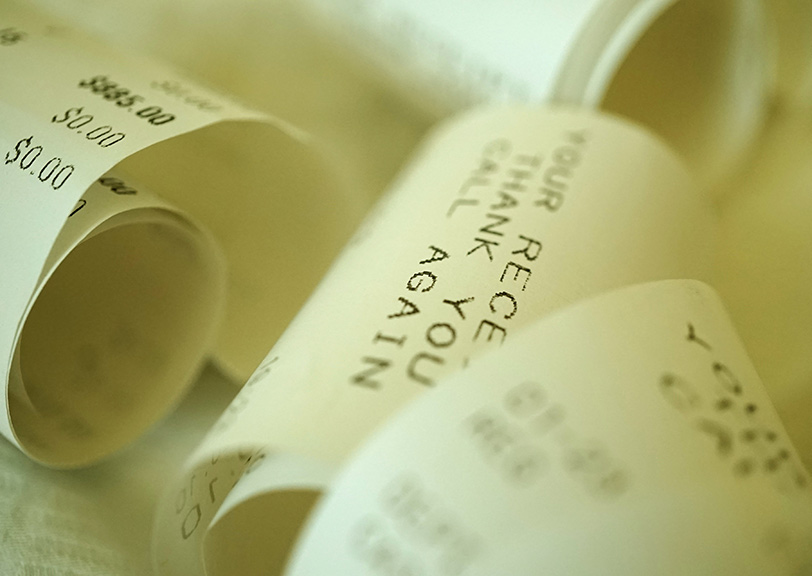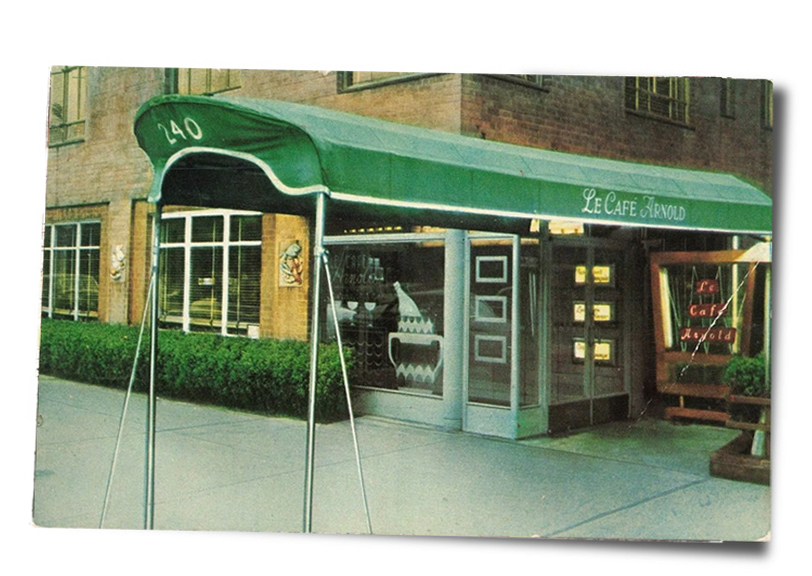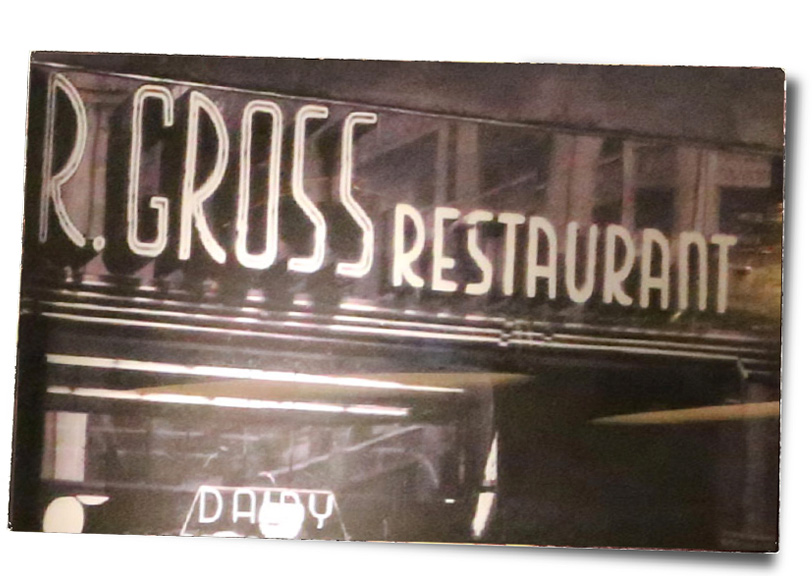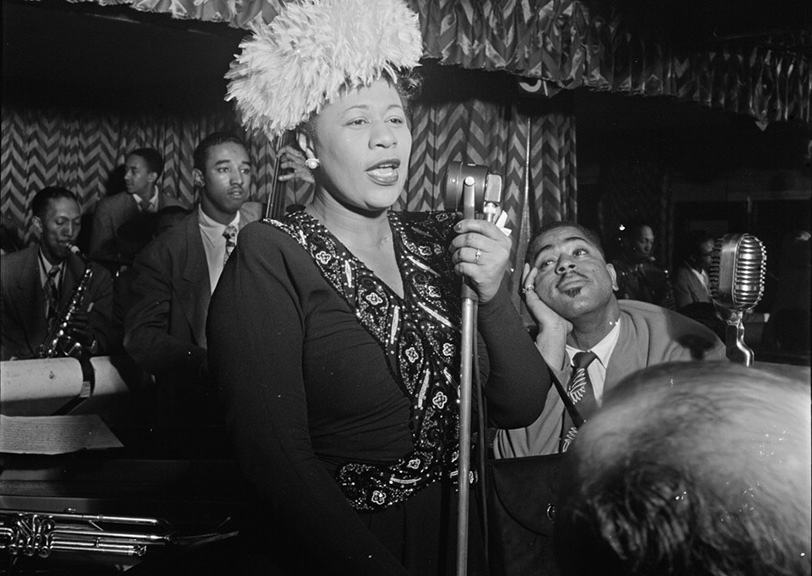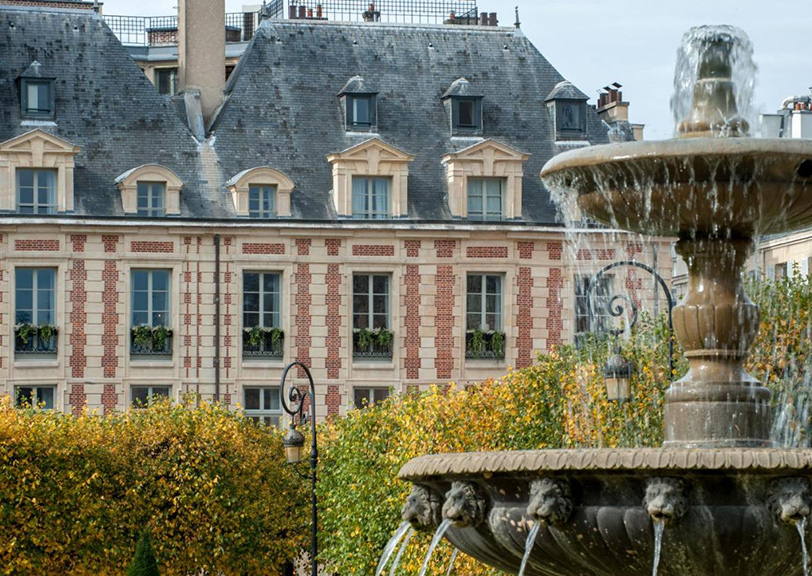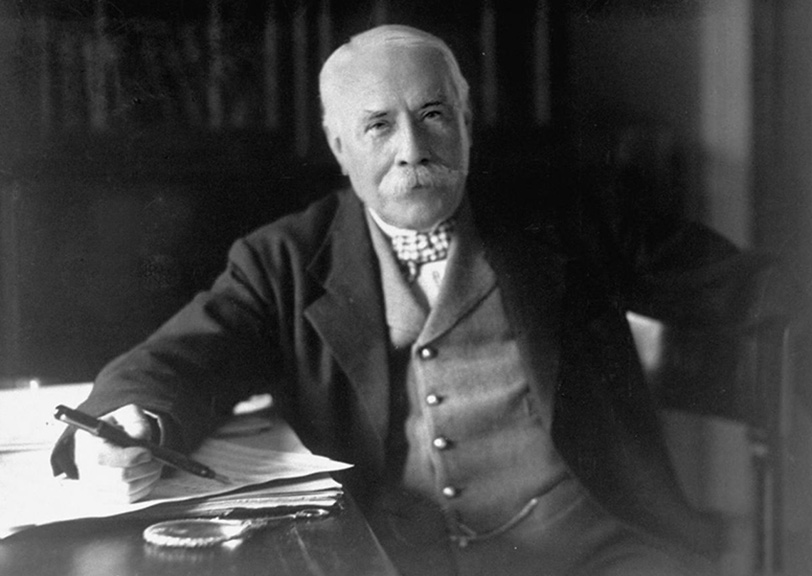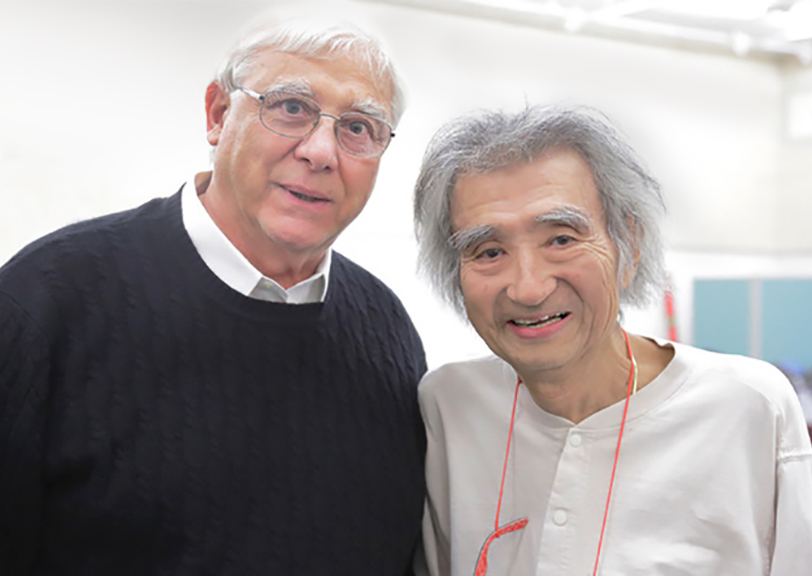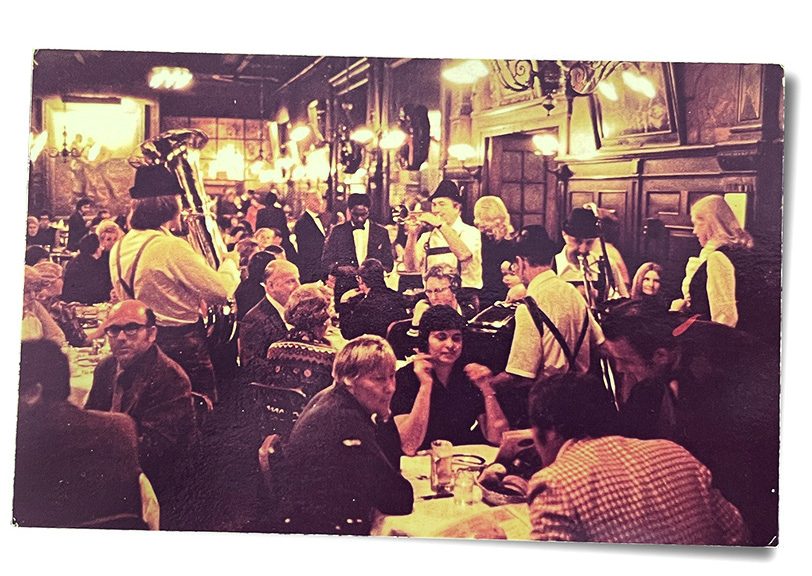ENTER YOUR EMAIL TO RECEIVE OUR WEEKLY NEWSLETTER
The Man Who Loved Movies
Dan Talbot set the pace for independent films and arthouse cinemas in New York—and way beyond
By Toby Talbot
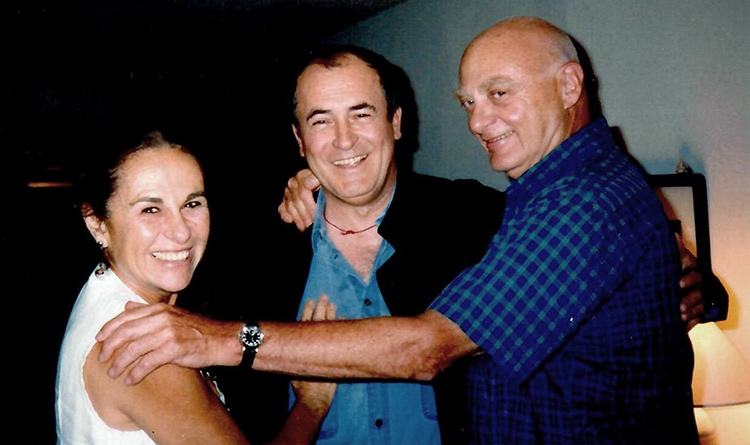
Film distributor and theater owner Dan Talbot, arms extended to his wife Toby (who wrote this article) and Bernardo Bertolucci. The year was 1965, when the Talbots launched Bertolucci’s Before the Revolution.
. . . . . . . . . . . . .
July 5, 2022
Dan Talbot changed the way the Upper West Side, New York, and cities and towns around the U.S. and world go to the movies—or so I’ve been told. I’m his wife. His memoir, In Love with Movies, which I edited and which was published by Columbia University Press earlier this year, is about running those now-legendary arthouse theaters, the New Yorker, the Cinema Studio, the Metro Theater, and Lincoln Plaza Cinemas, as well as the distribution company New Yorker Films, for more than sixty years, discovering and bringing in directors and their films even from the farthest flung places. He set the pace for independent cinemas around the world.
Here’s how it started: As newlyweds in the early ’50s, we lived in Astoria, Queens, from which we could walk across the Manhattan Bridge with hero sandwiches in hand, and go to, say, the Beverly Theater on 50th Street under the Third Avenue El—(torn down with the El was demolished by the mid ’50s); the Sutton, on 57th and Third (which didn’t survive past 1980); or the Little Carnegie, tucked into the 7th Avenue side of Carnegie Hall (closed in 1982). Budding cinephiles, we feasted on films like Brief Encounter, I Know Where I’m Going, Children of Paradise, and Rome, Open City.
Fast forward several years. After a wanderlust year in Spain with our two little daughters, we settled in a brownstone on West 90th Street. Essentially broke, Dan, who’d earlier held editing jobs at various publishing houses, began looking for a new livelihood while I started teaching Spanish at Columbia University. One day in 1960, we happened to hear that my sister’s accountant was planning to turn the Yorktown Theater, on Broadway between 88th Street and 89th Streets, into a venue for Spanish-language films. Dan had other ideas; he persuaded the accountant to let him run the theater for a year as a repertory house showing films that weren’t otherwise screened at American theaters. The accountant agreed. Dan took on that job at the starting salary of $125 a week. It became a lifetime career. We bought red velvet seats from the newly closed Roxy Theater, just off Times Square. The Roxy had been one of the largest movie palaces in the country. In order to secure a matron’s license, I went down to City Hall to be tested for tuberculosis.
We renamed the theater the New Yorker. Our opening bill was Henry V, starring and directed by Laurence Olivier; and The Red Balloon, Albert Lamorisse’s fantasy about a Parisian boy’s friendship with a balloon and soaring into the heavens. When two thousand attendees showed up on opening night, forming a line that stretched around the block, we were the ones who went soaring. New Yorkers, it seems, were hungry for films. We then played The Magnificent Ambersons, directed by that young upstart, Orson Wells, along with Robert Frank and Alfred Leslie’s Pull my Daisy.
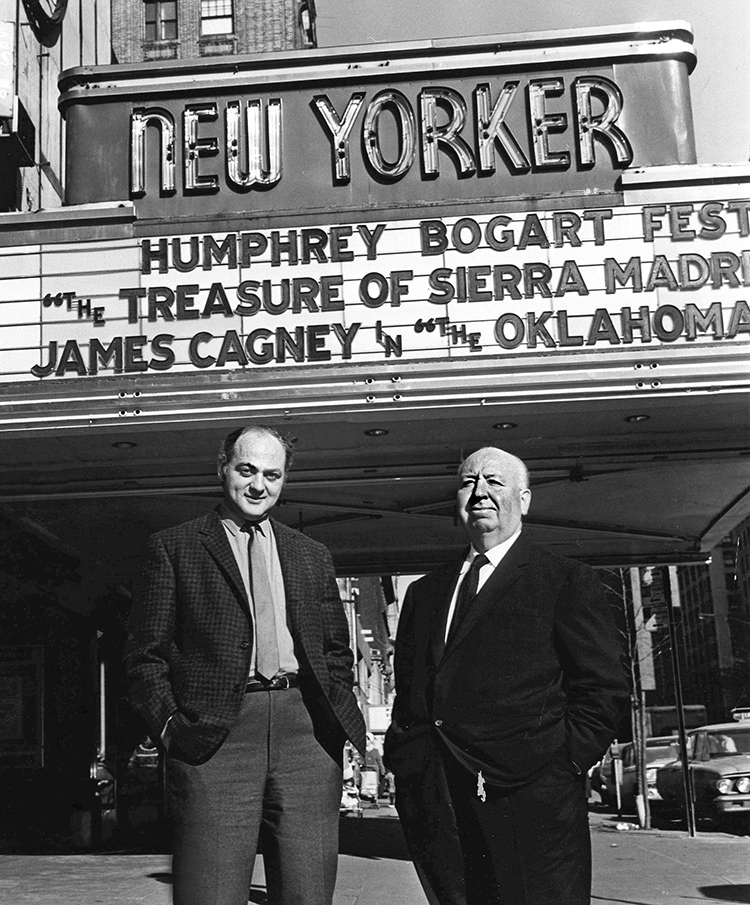
Alfred Hitchcock, right, with Dan Talbot, in front of the New Yorker Theater marquee in 1966—the year that theater held a Hitchcock retrospective.
. . . . . . . . . . . . .
The New Yorker was a success from day one. Our audience was mostly young, with students coming down from Columbia University, just three subway stops away.
“Suddenly, I had a wonderful toy to play with,” Dan memorably said. “A 900-seat theater!” It was our living room. We showed films that we personally wanted to see, from Humphrey Bogart’s to the Marx Brothers,’ W.C. Fields’ to Preston Sturgis’ comedies.
We held retrospectives of American films from the ’30s and ’40s—D.W. Griffith … Buster Keaton—some of them not seen for decades. But more and more, we focused on foreign films which previously had no chance of commercial release in the U.S. And what riches to choose from, altogether! Eisenstein, Lubitch, Renoir, Chaplin. We showed von Sternberg’s Blue Angel, de Sica’s Shoeshine, Hitchcock’s Strangers on a Train, Kubrick’s Paths of Glory, Welles’ Touch of Evil, Becker’s Casque d’Or, Godard’s Les Carabinieres.
Dan’s bold programming not only became a blueprint, an inspiration, and a launch pad for art houses around the country, and not only was the annual catalog we published used by universities to develop their film curricula, but the films shown at the New Yorker created a hotbed of Upper West Side activity. Program notes got written by a circle of eager young neighborhood writers: Andrew Sarris, Pauline Kael, William Everson, Eugene Archer, Jules Feiffer, and Jack Kerouac. Peter Bogdanovich approached Dan when we opened the theater, asking to work for him. He went on to plan some of our series and wrote program notes, which he sold in the lobby for twenty-five cents. Susan Sontag, then teaching at Columbia’s Religion Department, likewise showed up with her young son, David Rieff, and asked for a permanent pass. She got one! Dan admired her boldness.
Our theater was the family store. Attendees would confide their troubles to Bella, behind the candy stand, unaware that she was my mother. They trusted her confidentiality. Manny Farber, the film critic, liked to chat with her when flitting in and out of a B movie, so as to catch particular scenes he relished. He dedicated his book, Negative Space, to “Toby’s mother.” My father, meanwhile, stood in the lobby, keeping an eye out for pickpockets.
One day Dan and I discovered a particular film we wanted to show: Before the Revolution, by Bernardo Bertolucci, a young unknown out of Italy. We were told by the producer that we couldn’t play this film—it had no distributor. “Okay,” said Dan, he’ll be the distributor, barely knowing what that entailed. And that is how New Yorker Films, our distribution company, began, in a shoehorn-size office above the theater. In time, we amassed over 400 films—by Bresson, Rohmer, Malle, Varda, Herzog, Merchant & Ivory, Akerman, and Mizoguchi, to name just a smattering of directors—and became a source for film classes and cinema societies.
In one of the funniest scenes in Annie Hall, Woody Allen and Diane Keaton are standing in line in the New Yorker lobby, overhearing some pretentious babble about Federico Fellini and Marshall McLuhan. Suddenly the outraged Woody points to the actual McLuhan, who just happens to be standing at a nearby billboard, and before we know it McLuhan is refuting the speaker. That scene, whatever else it is, is an homage to our theater.
Our guest books, for patrons to sign, were filled with thousands of film requests, as well as comments on their dreams and passions—plus their complaints. One entry read: Fix the water cooler. Another comment implored us to show Chaplin films. Dan began corresponding with Charlie Chaplin, and succeeded in getting prints. (By then, we had standing.)
And then came the time when we decided no longer to sell popcorn. Their crunchy chewing noise, we assumed, was disturbing. Our filmgoers were outraged—and let us know in the guest books. Popcorn sales soon resumed.
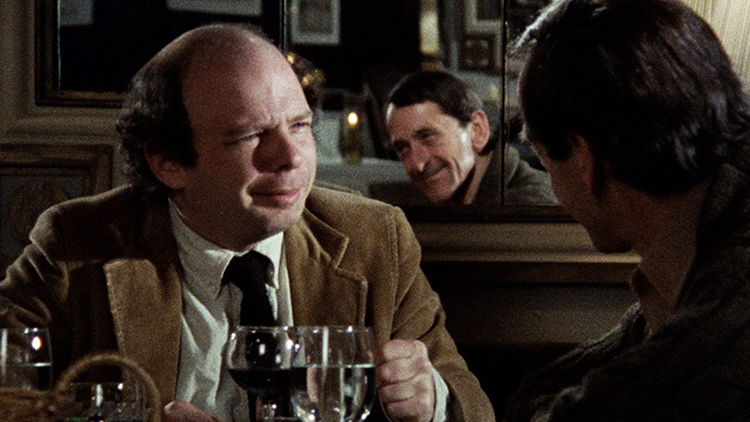
Wallace Shawn and a mirrored Andre Gregory in a scene from My Dinner with Andre, from 1981. Two guys just talking at a table became the largest grossing film in the entire run of New Yorker Films.
. . . . . . . . . . . . .
In 1974, we sold the New Yorker Theater to devote ourselves to distribution. But four years later, Dan missed running a theater, and we opened three Upper West Side venues: the Cinema Studio on 66th Street and Broadway, followed by the Metro on 104th, and then the Lincoln Plaza Cinemas, with six auditoriums, across Broadway from Lincoln Center. Moviegoers came from all over the city and way beyond. Our theaters were destinations.
Dan’s memoir describes our discovery of Lanzmann’s Shoah, Malle’s My Dinner with Andre, and Fassbinder’s Marriage of Maria Braun, along with insights into our relationships with leading world directors—Godard, Fassbinder, Wenders, Varda, Kiarostami—all of whom became friends. Deals were made on a sheet of paper with a handshake.
One day at a get-together in a Paris café, our friend Louis Marcorelles, Le Monde’s film critic, arranged for us to meet a young Senegalese filmmaker, who soon emerged, with a pipe in his mouth, from a nearby modest hotel. That was our introduction to Ousmane Sembène, who would later be named “the Father of African cinema.“
The nest day we attended a screening of three of his films: two shorts, Borom Sarret and Tau, along with Black Girl, a powerful feature about a Senegalese woman hired and exploited by a French couple. We arranged to distribute all of Ousmane’s films, which we did until the end of his life in 2007. Moolade, I remember well, was an outcry against female circumcision. How we regret never having visited Ousmane at his home in Senegal, where we’d been invited so many times.
And then there was the time the director Louis Malle came to Dan’s office with a script he’d written that he had no confidence in. Dan read it overnight, urged Malle to pursue it, and helped raise the funds to produce it. It was not an expensive film, with only two characters, Andre Gregory and Wallace Shawn, sitting in a restaurant, just talking. After My Dinner with Andre’s modest opening at the Cinema Studio in 1981, it became the largest grossing film in the history of New Yorker Films.
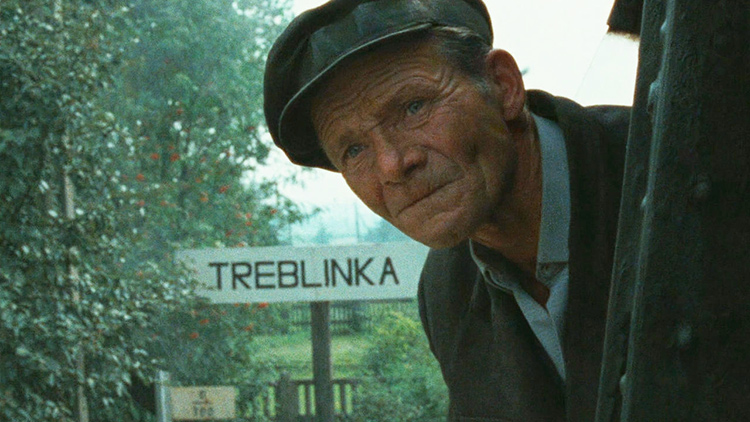
A scene from Claude Lanzmann’s Shoah. Documenting the Holocaust, this was a major entry into New Yorker Films’ collection of leading-edge cinematic greats.
. . . . . . . . . . . . .
Perhaps the film Dan devoted most of his energy to was Shoah. One Friday morning, we read a small item in the New York Times about a nine-and-a-half-hour film on the Holocaust that was about to open in Paris. We had to go and see it, Dan insisted. I protested; I had a class to teach. Teach I did, but at 7 p.m. we were on an Air France flight to Paris. On Saturday morning, we saw the first four hours of Shoah, its director, Claude Lanzmann, seated behind us interpreting—the film was in German, French, Hebrew and Yiddish. On Sunday morning, we saw Part Two.
Afterward, on a café table, Claude poured out a shopping bag filled with bills he had to pay. We signed his contract with a handshake. The film opened at the Cinema Studio and had a long run. There were many Holocaust survivors and children of survivors whose parents had never spoken about their experiences. Seeing this film broke the ice for them. To introduce it, Dan traveled to Chicago, Los Angeles, St. Louis—wherever there was a significant Jewish population. He regarded doing so as a moral obligation.
In Love with Movies lays out the nuts and bolts of running a theater—from projection, air conditioning, and deciding on the music between intervals, to making sure there was enough toilet paper. I was in charge of food and confections. The fare, atypical for a movie theater, included smoked salmon, Polish ham, cheddar cheese, and pastries—each from a different vendor. The ricotta cheesecake from Lanciani in the West Village, the gingerbread from a Jamaican woman, brownies with and without nuts from the Little Red Hens.
Dan’s memoir is the story of a man with a passion, willing to take risks—we had no private investors; we were beholden to no one. What we did have was a loyal staff, who came from a variety of countries. Everyone worked in harmony, and we had an audience who trusted our judgment and came to see whatever we showed.
Dan died in January of 2017. His memorial service, held on the very day the New Yorker Theater closed, filled five auditoriums at the Lincoln Plaza Cinemas. Outside, flyers were passed out announcing the formation of the Coalition for the New Plaza Cinema, with the intent of showing films throughout the year of the sort that had become a tradition at that location. Dan had created a loyal and vibrant cultural community. “Few did more for world cinema distribution and exhibition in this country,” texted the film distributor C. Mason Wells. “A crushing loss.”
Toby Talbot is the author of The New Yorker Theater and Other Scenes from a Life at the Movies (Columbia University Press, 2009). She has taught Spanish and Latin American literature at Columbia and New York Universities and documentary film at the New School, and has translated numerous works from Spanish, including Jacobo Timerman’s Prisoner Without a Name, Cell Without a Number.




